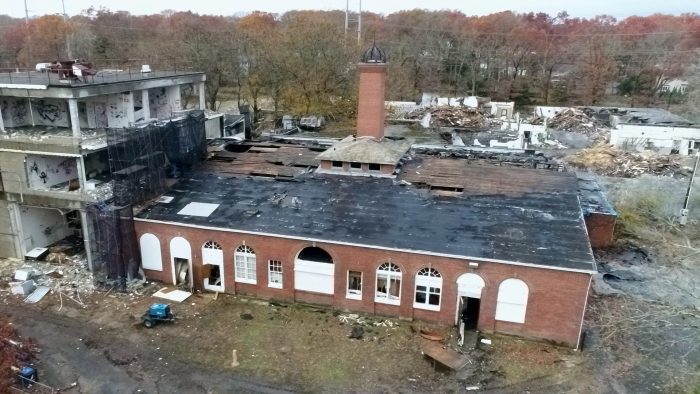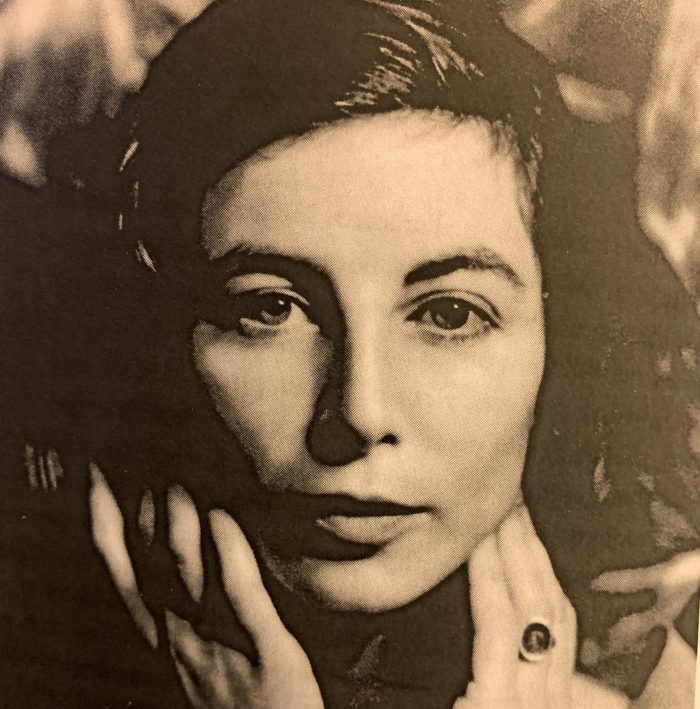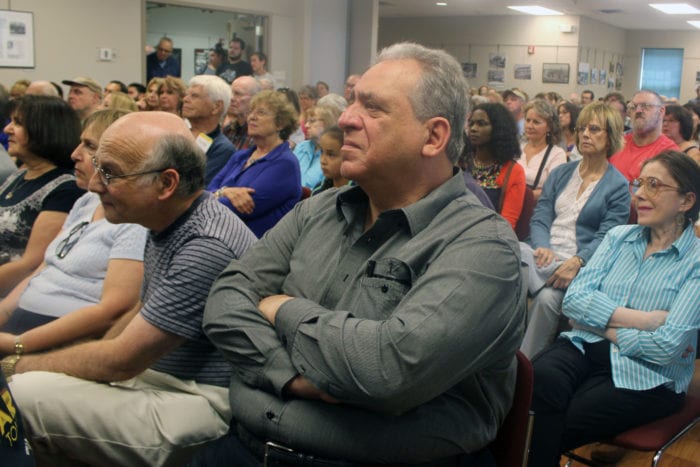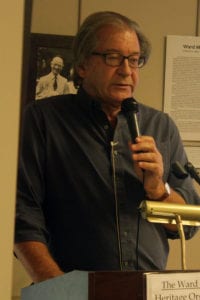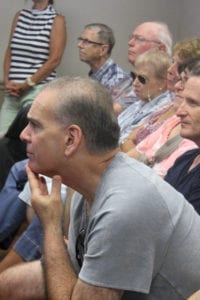Just days before the fire erupted, the Tesla Science Center at Wardenclyffe was marching along a path toward prosperity.
Center officials held a gala Nov. 16, announcing a $1.15 million installment of capital funding toward its anticipated $20 million restoration and redevelopment project.
Earlier, the center broke ground on the project, with demolition ongoing.
The center was ushering in a new era in its storied history.
“We were never in better shape,” said TSCW Executive Director Mark Alessi. “We were finally making the progress we had been working so hard for for many years.”
That’s when the flames broke loose.
Last Tuesday, Nov. 21, a conflagration — the cause of which is still unknown — enveloped the historic building on-site, designed by famed architect Stanford White.
In the aftermath, center officials are working to remediate the situation. During a press event on Tuesday, Nov. 28, Mark Thaler, partner at Thaler Reilly Wilson Architecture & Preservation of Albany, reported that the original building was “fireproof for the most part,” noting that the original brick walls remain standing after the fire.
“We have lost some of the roof structure, which will be able to be restored, and we’re poised and ready to do that,” he said, adding that the ensuing stages include cleaning out the building, securing the walls and drying out the interior.
Mission Rebuild
Given the extent of the damages, the center is now calling upon benefactors from both near and far to bolster the restoration work.
Coined Mission Rebuild, the nonprofit has launched a $3 million emergency fund drive on Indiegogo. Mission Rebuild represents a separate fundraising effort from the $20 million redevelopment campaign.
Public officials from across levels of government attended Tuesday’s event, pledging their support.
“This is a really important historic site — not just for this county or this state or this country but worldwide,” said New York State Sen. Anthony Palumbo (R-New Suffolk). “We will do everything we can without question on the state level to continue to get the funding you need to get this project to the end.”
Deputy Suffolk County Executive Jon Kaiman said, “Buildings can burn down and then be rebuilt. The ideas behind them — the person, the history, the narrative that was created over 100 years ago — still exist.”
The deputy county executive continued, “Because the story behind it is so strong, so important, so relevant, we know that we can all stand together and continue this journey that was started so long ago.”
Suffolk County Legislator-elect Chad Lennon (R-Rocky Point) thanked the local firefighters “for taking such care” in extinguishing the fire while preserving the structure. Despite the setback to the organization’s momentum, he pledged to help the center continue carrying out its mission.
“It was one step back, and we’re going to take two steps forward,” Lennon maintained.
Also attending the press event, Town of Brookhaven Councilwoman Jane Bonner (R-Rocky Point) sang an optimistic tune: “Like a phoenix rising from the ashes, this Tesla Center will rise as well,” she forecasted. “We will help you raise your money. We will get you back to where you were,” adding, “At the end of the day, Tesla was successful — and so will the Tesla Science Museum and this organization.”
To donate to Mission Rebuild, please visit www.indiegogo.com/projects/fire-at-tesla-s-lab-immediate-restoration-needed.

